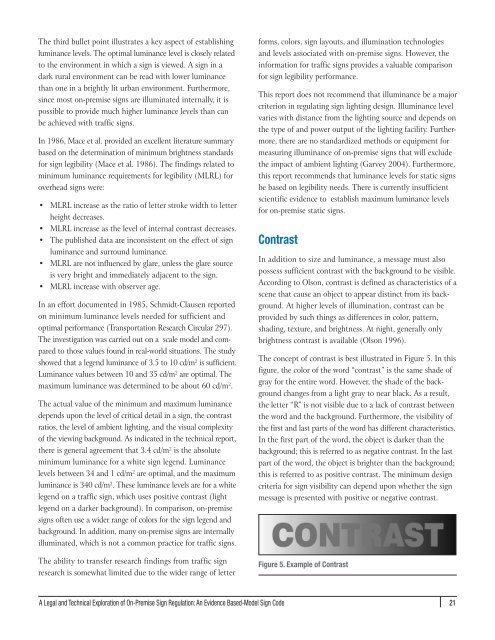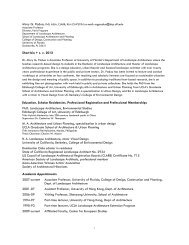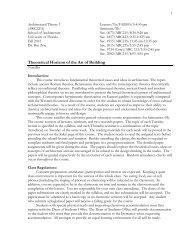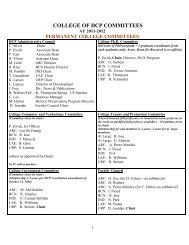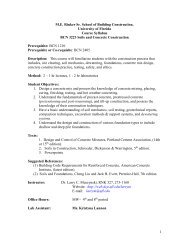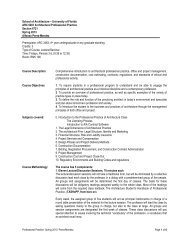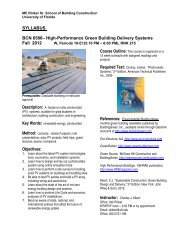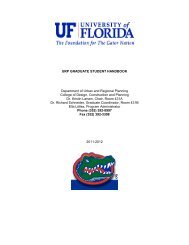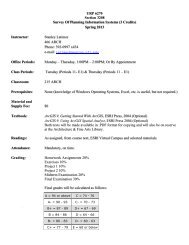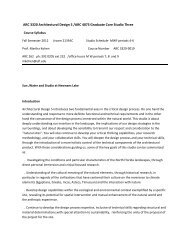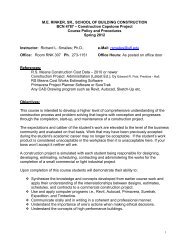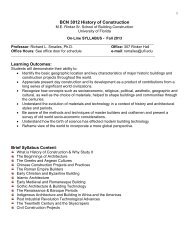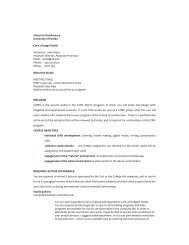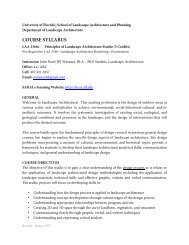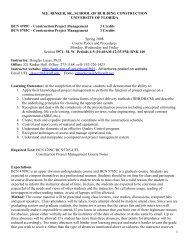An Evidence Based Model Sign Code - College of Design ...
An Evidence Based Model Sign Code - College of Design ...
An Evidence Based Model Sign Code - College of Design ...
You also want an ePaper? Increase the reach of your titles
YUMPU automatically turns print PDFs into web optimized ePapers that Google loves.
The third bullet point illustrates a key aspect <strong>of</strong> establishing<br />
luminance levels. The optimal luminance level is closely related<br />
to the environment in which a sign is viewed. A sign in a<br />
dark rural environment can be read with lower luminance<br />
than one in a brightly lit urban environment. Furthermore,<br />
since most on-premise signs are illuminated internally, it is<br />
possible to provide much higher luminance levels than can<br />
be achieved with traffic signs.<br />
In 1986, Mace et al. provided an excellent literature summary<br />
based on the determination <strong>of</strong> minimum brightness standards<br />
for sign legibility (Mace et al. 1986). The findings related to<br />
minimum luminance requirements for legibility (MLRL) for<br />
overhead signs were:<br />
• MLRL increase as the ratio <strong>of</strong> letter stroke width to letter<br />
height decreases.<br />
• MLRL increase as the level <strong>of</strong> internal contrast decreases.<br />
• The published data are inconsistent on the effect <strong>of</strong> sign<br />
luminance and surround luminance.<br />
• MLRL are not influenced by glare, unless the glare source<br />
is very bright and immediately adjacent to the sign.<br />
• MLRL increase with observer age.<br />
In an effort documented in 1985, Schmidt-Clausen reported<br />
on minimum luminance levels needed for sufficient and<br />
optimal performance (Transportation Research Circular 297).<br />
The investigation was carried out on a scale model and compared<br />
to those values found in real-world situations. The study<br />
showed that a legend luminance <strong>of</strong> 3.5 to 10 cd/m 2 is sufficient.<br />
Luminance values between 10 and 35 cd/m 2 are optimal. The<br />
maximum luminance was determined to be about 60 cd/m 2 .<br />
The actual value <strong>of</strong> the minimum and maximum luminance<br />
depends upon the level <strong>of</strong> critical detail in a sign, the contrast<br />
ratios, the level <strong>of</strong> ambient lighting, and the visual complexity<br />
<strong>of</strong> the viewing background. As indicated in the technical report,<br />
there is general agreement that 3.4 cd/m 2 is the absolute<br />
minimum luminance for a white sign legend. Luminance<br />
levels between 34 and 1 cd/m 2 are optimal, and the maximum<br />
luminance is 340 cd/m 2 . These luminance levels are for a white<br />
legend on a traffic sign, which uses positive contrast (light<br />
legend on a darker background). In comparison, on-premise<br />
signs <strong>of</strong>ten use a wider range <strong>of</strong> colors for the sign legend and<br />
background. In addition, many on-premise signs are internally<br />
illuminated, which is not a common practice for traffic signs.<br />
The ability to transfer research findings from traffic sign<br />
research is somewhat limited due to the wider range <strong>of</strong> letter<br />
forms, colors, sign layouts, and illumination technologies<br />
and levels associated with on-premise signs. However, the<br />
information for traffic signs provides a valuable comparison<br />
for sign legibility performance.<br />
This report does not recommend that illuminance be a major<br />
criterion in regulating sign lighting design. Illuminance level<br />
varies with distance from the lighting source and depends on<br />
the type <strong>of</strong> and power output <strong>of</strong> the lighting facility. Furthermore,<br />
there are no standardized methods or equipment for<br />
measuring illuminance <strong>of</strong> on-premise signs that will exclude<br />
the impact <strong>of</strong> ambient lighting (Garvey 2004). Furthermore,<br />
this report recommends that luminance levels for static signs<br />
be based on legibility needs. There is currently insufficient<br />
scientific evidence to establish maximum luminance levels<br />
for on-premise static signs.<br />
Contrast<br />
In addition to size and luminance, a message must also<br />
possess sufficient contrast with the background to be visible.<br />
According to Olson, contrast is defined as characteristics <strong>of</strong> a<br />
scene that cause an object to appear distinct from its background.<br />
At higher levels <strong>of</strong> illumination, contrast can be<br />
provided by such things as differences in color, pattern,<br />
shading, texture, and brightness. At night, generally only<br />
brightness contrast is available (Olson 1996).<br />
The concept <strong>of</strong> contrast is best illustrated in Figure 5. In this<br />
figure, the color <strong>of</strong> the word “contrast” is the same shade <strong>of</strong><br />
gray for the entire word. However, the shade <strong>of</strong> the background<br />
changes from a light gray to near black. As a result,<br />
the letter “R” is not visible due to a lack <strong>of</strong> contrast between<br />
the word and the background. Furthermore, the visibility <strong>of</strong><br />
the first and last parts <strong>of</strong> the word has different characteristics.<br />
In the first part <strong>of</strong> the word, the object is darker than the<br />
background; this is referred to as negative contrast. In the last<br />
part <strong>of</strong> the word, the object is brighter than the background;<br />
this is referred to as positive contrast. The minimum design<br />
criteria for sign visibility can depend upon whether the sign<br />
message is presented with positive or negative contrast.<br />
Figure 5. Example <strong>of</strong> Contrast<br />
A Legal and Technical Exploration <strong>of</strong> On-Premise <strong>Sign</strong> Regulation: <strong>An</strong> <strong>Evidence</strong> <strong>Based</strong>-<strong>Model</strong> <strong>Sign</strong> <strong>Code</strong> 21


